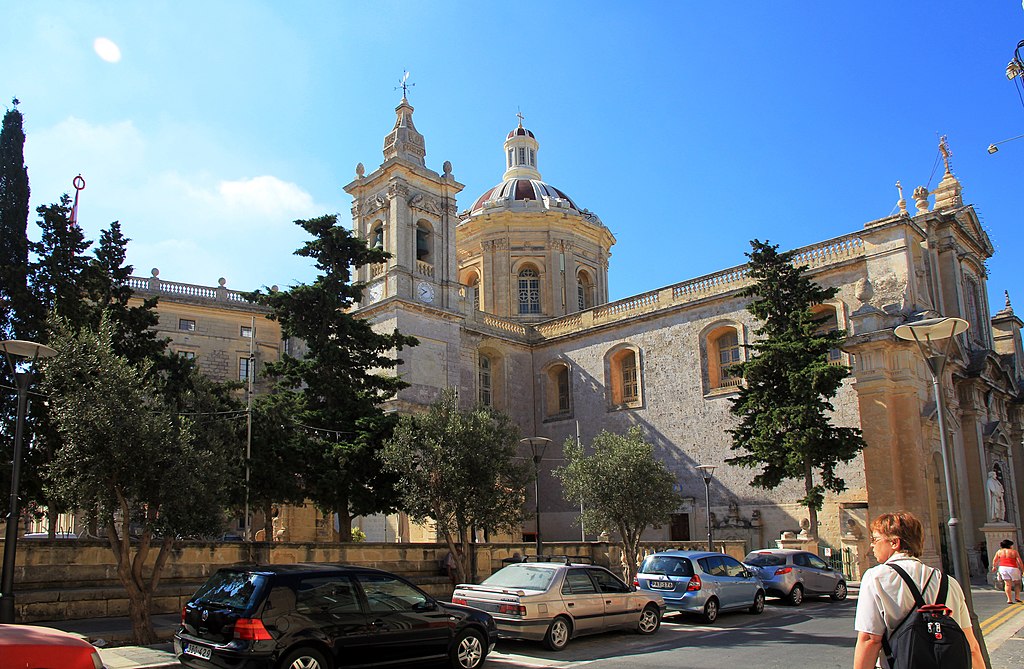Basilica of Saint Paul, Rabat
Basilica in Rabat

The Basilica of Saint Paul is one of Rabat's most revered religious landmarks, representing centuries of devotion, history, and architectural brilliance. Its origins trace back to the early Christian era when the area formed part of the ancient Roman city of Melite. Over the centuries, the site has evolved through multiple reconstructions, each reflecting the faith and artistry of its time. The current basilica, built in the 17th century, stands as a magnificent example of Maltese Baroque architecture, deeply entwined with the island's spiritual identity and its veneration of Saint Paul — the Apostle who, according to tradition, brought Christianity to Malta following his shipwreck.
From Early Churches to the Present Basilica
Before the current basilica took form, several earlier churches occupied the site, each adding to its historical and spiritual depth. The earliest recorded mention dates to 1336, when Bishop Hilarius referred to it as “ecclesia Sancti Pauli de crypta”, acknowledging both the church and its associated cemetery. By the 16th century, a larger church stood on the same site but was replaced by a more ambitious structure commissioned in 1653. Funded by Guzmana Navarra, a noblewoman renowned for her patronage, and designed by Francesco Buonamici, the basilica's construction was completed in 1683 under the skilled hand of Lorenzo Gafà, one of Malta's most celebrated architects. The new church embodied a sense of grandeur and permanence, symbolizing the strength of faith that had endured across centuries.
Architectural Brilliance and Spiritual Symbolism
The basilica's Baroque design showcases Gafà's mastery of proportion and ornamentation. Its interior features elegant arches, richly detailed altars, and luminous artworks that evoke reverence and serenity. The adjoining church of Saint Publius, originally built as part of the complex, underwent renovations in 1692 and again in 1726 under the architect Salvu Borg. Together, these two churches form a unified spiritual center that has served as a beacon of devotion for generations. In recognition of its historical and religious importance, the church was elevated to the rank of a Minor Basilica in 2020, cementing its place among Malta's most significant sacred sites.
The Grotto of Saint Paul
Beneath the basilica lies its most sacred site — the Grotto of Saint Paul. Accessible through the adjoining Church of Saint Publius, this revered cavern is traditionally believed to be the place where Saint Paul lived and preached during his three-month stay in Malta in 60 A.D.. The grotto has been a site of pilgrimage for centuries, visited by countless faithful and dignitaries alike. In 1748, Grand Master Pinto commissioned a statue of Saint Paul for the grotto, enhancing its sanctity and beauty. Over the years, it has been honored by several papal visits, including Pope John Paul II in 1990 and 2001, Pope Benedict XVI in 2010, and Pope Francis in 2022 — each reaffirming the site's global spiritual significance.
The Basilica of Saint Paul, Rabat appears in our Complete Guide to Visiting Rabat!
This website uses affiliate links which may earn a commission at no additional cost to you!
Visiting Basilica of Saint Paul, Rabat
Nearby Attractions
- Wignacourt Museum (0.0) km
Museum in Rabat - Cosmana Navarra House (0.0) km
Historic Building in Rabat - Catacombs of St. Paul (0.2) km
Church and Historic Site in Rabat - Domus Romana, Rabat (0.4) km
Roman Site in Mdina - Howard Gardens, Mdina (0.4) km
Gardens in Mdina - Mdina Ditch Gardens (0.4) km
Gardens in Mdina - Walls of Mdina (0.4) km
City Walls in Mdina - Greeks Gate, Mdina (0.5) km
City Gate in Mdina - Main Gate of Mdina (0.5) km
City Gate in Mdina - Mdina Dungeons Museum, Mdina (0.5) km
Museum in Mdina


